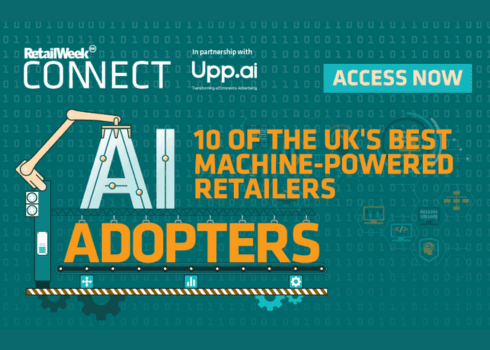The newly introduced 10% baseline tariff on all UK goods entering the US presents a major disruption for UK retailers operating in the American market. Industry leaders have called the move politically motivated and economically short-sighted, warning of impacts on both sides of the Atlantic. Yet regardless of these concerns, retailers now face the reality of operating under new pressure–at a time when inflation, shifting demand, and supply chain volatility were already challenging performance.
While longer-term strategies like nearshoring or supply chain redesign will take time, technology offers the most immediate path to adaptation - helping retailers respond with more speed, precision and control. It’s not a silver bullet, but it can take the edge off in the short term while laying the groundwork for more resilient operations.
Where Technology Can Help: The Three Tactical Levers Retailers Can Pull
Tariff management isn't just about reacting–it's about responding strategically. UK retailers can focus on three specific areas where emerging technology solutions can offer outsized impact: optimising landed costs, refining pricing strategies and strengthening inventory decision-making.
These tactical levers–Landed Cost Optimisation, Pricing Power, and Inventory Intelligence–offer a tech-enabled way to protect margins today and build stronger commercial foundations for the future.
1. Landed Cost Optimisation
Objective: Minimise duties and reduce freight costs through better sourcing, classification, and shipping.
Small operational improvements can make a meaningful difference when applied at scale. Accurate tariff classification is a smart starting point–tools like iCustoms, designed specifically for global trade, automate classification and estimate duties upfront, reducing the risk of misclassification and overpayment. This level of upfront visibility is increasingly essential when tariffs can swing landed costs significantly.
Freight optimisation is another area where efficiency adds up fast. Paccurate’s AI-powered cartonisation software improves packaging utilisation, reducing both weight and volume–which not only cuts shipping costs but can also lower tariff exposure in instances where duties are based on shipment value or physical dimensions.
For structural decisions–such as rethinking sourcing routes or facility locations–Optilogic’s Cosmic Frog provides network-wide scenario modelling. Retailers can test the impact of new tariff regimes across sourcing, transport and facility configurations to inform longer-term decisions. This helps avoid reactive cuts and instead identify structural shifts that reduce tariff exposure sustainably.
Technology also plays a role in unlocking overlooked levers like sourcing agility and duty recovery. Tech tools can accelerate supplier discovery, automate RFX workflows, and simplify duty drawback claims–helping retailers adapt faster and recover costs with less friction.
2. Pricing Power
Objective: Protect margins without undermining competitiveness or customer trust.
Price changes are inevitable–but blanket increases or guesswork-based markdowns risk damaging both performance and perception. Retailers increasingly need tools that can translate complex cost pressures into clear, localised pricing actions.
7Learnings supports this through AI-powered forecasting and elasticity modelling, allowing retailers to simulate the impact of pricing decisions before rollout–helping protect both margin and brand trust. As competitors navigate the same cost pressures, market intelligence becomes increasingly important.
Platforms like EDITED track real-time market responses, helping retailers position their offerings effectively. Whether the goal is to follow competitor price moves or strategically hold back to gain share, these insights support more confident execution.
Together, these capabilities support a pricing approach that’s both data-informed and brand-aware–allowing retailers to move decisively, not defensively.
3. Inventory Intelligence
Objective: Balance stock levels more accurately and reduce risk tied to higher unit costs.
As landed costs rise, the margin for inventory mistakes narrows. Holding too much ties up capital; holding too little risks lost sales. Retailers need more accurate, agile planning to stay balanced.
Forecasting platforms like Syrup Tech use AI to predict demand at a more granular level—down to individual SKUs and store locations. These tools help retailers match supply to demand more dynamically, protecting working capital without compromising responsiveness.
To support inventory decision-making at a more structural level, platforms like o9 Solutions enable “what-if” scenario planning–modelling how changes in sourcing routes, lead times, or tariff structures could affect stock availability, cost-to-serve and fulfilment speed. This enables smarter calls on where to hold stock, when to reorder and how to adapt inventory flows to shifting logistics realities.
Retailers will also benefit from leveraging consumer insight tools–such as sentiment analysis platforms and digital twins—to stay closer to evolving demand. These technologies can surface behavioural signals that guide SKU rationalisation, new product bets and replenishment decisions. As price sensitivity increases and preferences shift, aligning inventory with real-world demand becomes even more critical.
Prioritising for Impact
The full impact of the US tariffs will take time to unfold–and so will the most effective response. Not every solution will make sense for every business, especially as levels of US exposure, supply chain maturity, and internal capabilities vary widely.
Retailers should start by mapping where tariffs will bite hardest: product lines with high US volume, tight margins, or tariff-sensitive inputs. From there, quick wins often come from improving visibility (e.g., tariff classification and pricing simulations) and building responsiveness into sourcing and inventory planning.
Importantly, many of these technologies can be tested in ways that integrate with core, existing systems–without requiring a major tech overhaul. The priority is less about tech for tech’s sake–and more about targeting operational pain points where faster decisions or smarter trade-offs can meaningfully protect margin from day one.
Looking Ahead: From Response to Readiness
With US trade policy becoming increasingly unpredictable–underscored by recent tariff reversals and the potential for further regulatory shifts–agility is no longer optional. Retailers who build flexibility into their operations now will be best positioned to adapt to whatever comes next.
These tools don’t just help retailers weather short-term disruption–they lay the foundation for more adaptive, insight-led decision-making.
Tariffs are just one pressure in a broader shift: toward a more fragmented, compliance-heavy global trade environment where agility and traceability are becoming non-negotiable. Retailers will need to demonstrate product origin, ESG credentials, and regulatory compliance–not just to clear customs, but to unlock exemptions, build trust, and future-proof access to key markets.
Platforms like Watr, which use blockchain infrastructure to create decentralised, verifiable product records, point to what this next chapter might look like—enabling traceability from source to shelf and helping retailers respond to regulatory demands with greater confidence and speed.
For UK retailers, this may also mean rethinking their broader US approach. Some may find that direct-to-consumer models offer better economics than wholesale under the new tariff regime. Others may look to US-based production partnerships that combine British design with domestic fulfilment.
Technology won’t erase the challenge, but it offers the visibility, control and strategic agility to respond on your own terms. And in today’s environment, that’s a decisive advantage.


